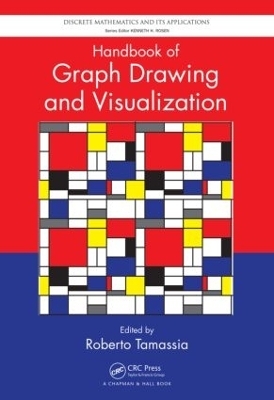
Handbook of Graph Drawing and Visualization
Chapman & Hall/CRC (Verlag)
978-1-58488-412-5 (ISBN)
Get an In-Depth Understanding of Graph Drawing Techniques, Algorithms, Software, and Applications
The Handbook of Graph Drawing and Visualization provides a broad, up-to-date survey of the field of graph drawing. It covers topological and geometric foundations, algorithms, software systems, and visualization applications in business, education, science, and engineering. Each chapter is self-contained and includes extensive references.
The first several chapters of the book deal with fundamental topological and geometric concepts and techniques used in graph drawing, such as planarity testing and embedding, crossings and planarization, symmetric drawings, and proximity drawings. The following chapters present a large collection of algorithms for constructing drawings of graphs, including tree, planar straight-line, planar orthogonal and polyline, spine and radial, circular, rectangular, hierarchical, and three-dimensional drawings as well as labeling algorithms, simultaneous embeddings, and force-directed methods. The book then introduces the GraphML language for representing graphs and their drawings and describes three software systems for constructing drawings of graphs: OGDF, GDToolkit, and PIGALE. The final chapters illustrate the use of graph drawing methods in visualization applications for biological networks, computer security, data analytics, education, computer networks, and social networks.
Edited by a pioneer in graph drawing and with contributions from leaders in the graph drawing research community, this handbook shows how graph drawing and visualization can be applied in the physical, life, and social sciences. Whether you are a mathematics researcher, IT practitioner, or software developer, the book will help you understand graph drawing methods and graph visualization systems, use graph drawing techniques in your research, and incorporate graph drawing solutions in your products.
Roberto Tamassia is the Plastech Professor of Computer Science, Chair of the Department of Computer Science, and Director of the Center for Geometric Computing at Brown University. He is a fellow of the American Association for the Advancement of Science (AAAS), the Association for Computing Machinery (ACM), and the Institute of Electrical and Electronics Engineers (IEEE). He received a Technical Achievement Award from the IEEE Computer Society for pioneering the field of graph drawing. Dr. Tamassia is the co-founder and co-editor-in-chief of the Journal of Graph Algorithms and Applications. He has published six textbooks and more than 250 research articles and books. He received a PhD in electrical and computer engineering from the University of Illinois at Urbana-Champaign and a Laurea in electrical engineering from the "Sapienza" University of Rome. His research interests include the analysis, design, and implementation of algorithms, applied cryptography, cloud computing, computational geometry data security, and graph drawing.
Planarity Testing and Embedding. Crossings and Planarization. Symmetric Graph Drawing. Proximity Drawings. Tree Drawing Algorithms. Planar Straight-Line Drawing Algorithms. Planar Orthogonal and Polyline Drawing Algorithms. Spine and Radial Drawings. Circular Drawing Algorithms. Rectangular Drawing Algorithms. Simultaneous Embedding of Planar Graphs. Force-Directed Drawing Algorithms. Hierarchical Drawing Algorithms. Three-Dimensional Drawings. Labeling Algorithms. Graph Markup Language (GraphML). The Open Graph Drawing Framework (OGDF). GDToolkit. PIGALE. Biological Networks. Computer Security. Graph Drawing for Data Analytics. Graph Drawing and Cartography. Graph Drawing in Education. Computer Networks. Social Networks. Index.
| Reihe/Serie | Discrete Mathematics and Its Applications |
|---|---|
| Zusatzinfo | 46 Tables, black and white; 480 Illustrations, black and white |
| Sprache | englisch |
| Maße | 178 x 254 mm |
| Gewicht | 1660 g |
| Themenwelt | Technik |
| ISBN-10 | 1-58488-412-6 / 1584884126 |
| ISBN-13 | 978-1-58488-412-5 / 9781584884125 |
| Zustand | Neuware |
| Haben Sie eine Frage zum Produkt? |
aus dem Bereich


